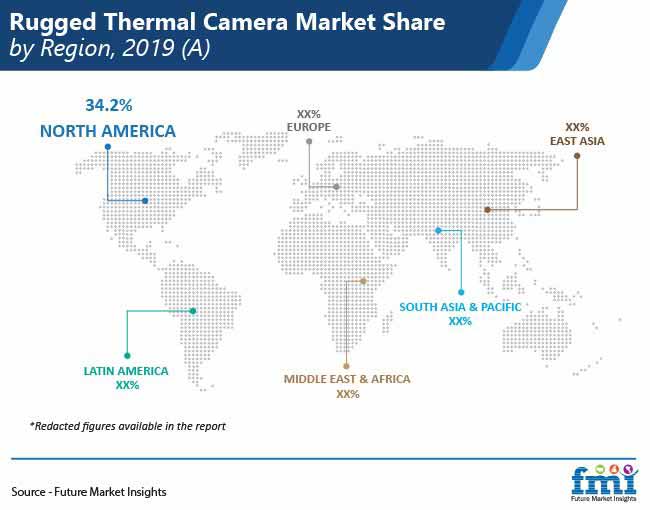What is Driving the Demand for Rapid Hepatitis Testing?
The availability of advanced diagnostic procedures for hepatitis tastings expects to boost the market growth in the coming years. The paradigm shift of the researchers and manufacturers to molecular diagnostics from conventional technologies has amplified the capability of procedures that has minimized the testing time.
Request a Sample of this Report @ https://www.futuremarketinsights.com/reports/sample/rep-gb-13367
For example, molecular diagnostics detect the presence of a virus that is involved by performing genetic tests to confirm the exact strain of the causative virus. Furthermore, the rising prevalence of hepatitis among the growing population is also expected to fuel market growth.
According to World Health Organization (WHO), around 325 million people are living with hepatitis B and/or C, and for most globally. To reduce the current global burden of hepatitis, the key players have increased focus on research area efforts to develop an effective rapid test that enables virus identification and eases linkage to various healthcare setting. For instance, in February 2019, Abbott has received CE Mark for the Determine™ HBsAg 2 test, the most sensitive rapid diagnostic test used for hepatitis B surface antigen detection.
COVID-19 Impact on Rapid Hepatitis Testing Market Growth
The COVID-19 pandemic projected a significant impact on the rapid hepatitis testing market. Countrywide lockdown, disruption in supply chain and halt on transportation subjected product shortage. Global demand for vaccination led the manufacturers to focus on the vaccine production that has likely decreased the production of the other products that has no emergency headed significant impact on the rapid hepatitis testing market growth.
The U.S. and Canada Rapid Hepatitis Testing Market Outlook
U.S. and Canada will hold the top position in the rapid hepatitis testing market due to the rising prevalence of viral infection, the number of hepatitis cases caused due to change in lifestyle, and high consumption of alcohol, drug or toxins in the American countries. According to the Centre OF Disease and Control (CDC) total 18,846 of hepatitis A, a total of 3,192 acute hepatitis B, and around 4,136 acute hepatitis C cases were reported in 2019.
Europe Demand Outlook for Rapid Hepatitis Testing
Europe holds the second-most position in the rapid hepatitis testing market due to the growing number of hepatitis cases in the European countries. According to WHO European Region, in 2019, around 15 million people living with hepatitis B affects lives of infection. Central Europe has the high per cent of cases around 6-8% of people living with Hepatitis B, while western, northern and central European countries has less than 0.1% of cases.
Who are the Key Players of Rapid Hepatitis Testing Market?
Some of the leading players in the rapid hepatitis testing market include
- Abbott Laboratories
- Siemens Healthcare GmbH
- Bio-Rad Laboratories, Inc.
- Bayer AG
- CTK Biotech, Inc.
- QIAGEN
- Thermo Fisher Scientific Inc.
- BioGenex
- Biochrome Scientific
- Others
Ask An Analyst @ https://www.futuremarketinsights.com/ask-the-analyst/rep-gb-13367
These companies followed certain strategies like a partnership, new product lunch and approval, merger and acquisitions to gain a good position in the market. For instance, in May 2021, Biosynex SA acquired Avalun SAS, a company developing the Labpad in vitro diagnostic device providing rapid biological test results from small sample volumes.
The report is a compilation of first-hand information, qualitative and quantitative assessment by industry analysts, inputs from industry experts and industry participants across the value chain. The report provides an in-depth analysis of parent market trends, macro-economic indicators and governing factors along with market attractiveness as per segments. The report also maps the qualitative impact of various market factors on market segments and geographies.
Rapid Hepatitis Testing Market Report Highlights:
- Detailed overview of the parent market
- Changing market dynamics in the industry
- In-depth market segmentation
- Historical, current and projected market size in terms of volume and value
- Recent industry trends and developments
- Competitive landscape
- Strategies of key players and products offered
- Potential and niche segments, geographical regions exhibiting promising growth
- A neutral perspective on market performance
- Must-have information for market players to sustain and enhance their market footprint
By Test Type:
- Serologic Antibody Assays
- Enzyme Immunoassay (EIA)
- Chemiluminescence Immunoassay (CIA)
- Point-of-Care Rapid Immunoassays
- Recombinant Immunoblot Assay (RIBA)
- Molecular HCV RNA Tests
- Qualitative HCV RNA
- Quantitative HCV RNA
- Immunoassays For HCV Core Antigen
By Indication:
- Hepatitis A
- Hepatitis B
- Hepatitis C
By Distribution Channel:
- Hospital Pharmacies
- Retail Pharmacies
- Online pharmacies
By Region:
- North America
- Latin America
- Europe
- South Asia
- East Asia
- Oceania
- MEA
Buy Complete Report @ https://www.futuremarketinsights.com/checkout/13367
Contact Us:
Future Market Insights
Unit No: AU-01-H Gold Tower (AU), Plot No: JLT-PH1-I3A,
Jumeirah Lakes Towers, Dubai,
United Arab Emirates
For Sales Enquiries: sales@futuremarketinsights.com
For Media Enquiries: press@futuremarketinsights.com
Website: https://www.futuremarketinsights.com
